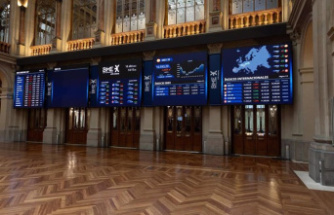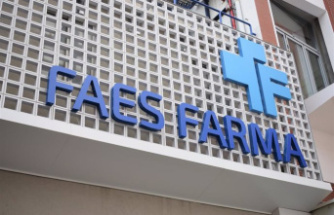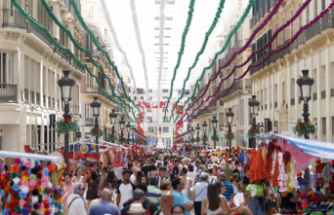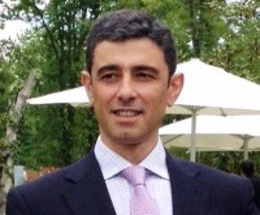In late January, as President Donald Trump signed an executive order to cut off some federal funding to cities, counties and states that refuse to detain and turn over to federal authorities people who are living in the U.S. illegally, Chicago Mayor Rahm Emanuel reiterated the city's commitment to providing a safe haven to immigrants who are living here illegally but are law-abiding: "We're gonna stay a sanctuary city."
Chicago's path to being a sanctuary city began more than 30 years ago.
July 18, 1982Church congregation begins taking in refugees
The Wellington Avenue Church congregation votes to join the sanctuary movement -- becoming just the second church in the U.S. to harbor refugees who entered the country illegally. The movement, which has roots in the medieval tradition of churches providing sanctuary for those fleeing persecution, was aimed at providing a safe haven for Central Americans running from political repression and violence in their home countries. They were refused asylum here because of U.S. support for the governments of El Salvador and Guatemala. About 20 Chicago-area churches became sanctuaries in the 1980s.
Salvadorans wear masks to hide their faces during a visit to Wellington Avenue United Church of Christ on Aug. 9, 1982. (Chicago Tribune) November 1982Group becomes national leader in sanctuary movement
Recognized for its work in organizing and transporting refugees from El Salvador to a network of welcoming churches around the U.S., the Chicago Religious Task Force on Central America becomes the national clearinghouse for the sanctuary movement. The group distributes books on the sanctuary movement and holds rallies in downtown Chicago to bring awareness to the issues facing Central American refugees.
Members of the Chicago Religious Task Force on Central America protest outside the Federal Building on Sept. 16, 1983, in Chicago. (Chicago Tribune) Jan. 20, 1985Chicago's chief legal officer: Don't assist the feds
A week after 18 workers driving cabs were arrested, Corporation Counsel James Montgomery recommends Chicago not cooperate with federal immigration authorities in arresting immigrants living in the U.S. illegally unless subpoenas are obtained. Chicago's Immigration and Naturalization Service Director A.D. Moyer criticizes Montgomery's suggestion.
March 7, 1985Mayor encourages 'equal access by all persons' to city services, licenses
Mayor Harold Washington signs an executive order ending the city's practice of asking job and license applicants about their U.S. citizenship and halting cooperation by city agencies with federal immigration authorities.
Mayor Harold Washington says he took an oath to obey the laws and raises his hand before signing the executive order enhancing Chicago's sanctuary status on March 7, 1985. (Chicago Tribune archives) Dec. 17, 1985'Operation Taxicab' rounds up immigrants suspected of living in U.S. illegally
Calling cabdrivers who are living in the U.S. illegally "a serious menace," the city's immigration director, Moyer, orders spot checks of drivers' identification at airports and other hangouts. Dubbed "Operation Taxicab," 129 drivers are arrested in a single day -- 51 could later prove they were in the U.S. legally. Though there was no federal law prohibiting employers from hiring workers in the country illegally, Moyer blames Mayor Washington's earlier executive order for opening the door.
An abandoned cab is towed following a raid by immigration agents at the Merchandise Mart taxi stand on Dec. 17, 1985. (Chicago Tribune) April 30, 1987Feds offer immigrants ways to gain legal status
Less than 1 1/2 years after overseeing raids on taxi drivers in the U.S. illegally, Moyer details plans to open four centers to help immigrants with paperwork to become legal U.S. residents. The effort is part of the Immigration Reform and Control Act, a law passed by Congress and signed by President Ronald Reagan to offer a path to legal residence for people in the U.S. illegally since Jan. 1, 1982.
A.D. Moyer, Chicago district director for immigration services, points out locations at a April 30, 1987, news conference where immigrants who are in the U.S. illegally can get help. (Chicago Tribune) Nov. 1, 1987Sanctuary group urges 'hiring undocumented workers'
The Chicago Religious Task Force, a national clearinghouse for the sanctuary movement helping Central American refugees, said in a Chicago Tribune story that it was planning to urge priests, nuns and "employers to break the law by hiring undocumented workers" in the Chicago area, where tens of thousands of the immigrants live.
April 25, 1989Daley adopts Washington's sanctuary stance
Shortly after taking office, Daley signs 13 executive orders including one that reaffirms "fair and equal access" to employment, benefits and licenses to all -- regardless of nationality or citizenship.
Mayor Richard M. Daley signs an executive order on April 25, 1989. (Chicago Tribune) June 4, 1992Chicago Crime Commission asks for amendment
The group asks Mayor Daley to amend the 1989 executive order to allow Chicago police to share citizenship information with the INS to help combat street gangs. Later, Daley says any information about a person involved in serious crimes would be turned over to the feds. (This provision would be added as part of the city's 2012 Welcoming City ordinance.)
March 29, 2006City's sanctuary policy becomes law
The City Council votes -- 44-0 -- to pass an ordinance providing all residents equal access "to the services, opportunities, and protection it provides or administers."
Aug. 15, 2006Woman seeks church refuge to avoid deportation, reviving sanctuary movement
Ordered to be deported, Elvira Arellano and her U.S.-born son take refuge inside Adalberto United Methodist Church in Chicago's Humboldt Park neighborhood. She had been arrested in a post-Sept. 11, 2001, sweep of O'Hare International Airport, where she was working as a cleaner. Authorities discovered she had been using a fake Social Security number and had been previously deported to Mexico. Arellano would spend a year living in the church with her story receiving national attention. While awaiting a decision on her application for political asylum, Arellano was living above the same church where she sought refuge as of 2016.
Elvira Arellano and her son, Saul, greet supporters at Adalberto United Methodist Church on Sept. 30, 2006. (Abel Uribe/Chicago Tribune) Sept. 7, 2011Cook County won't fulfill ICE detainer requests
In a vote of 10-5, the Cook County Board passes an ordinance to free immigrants suspected of living in the U.S. illegally who are jailed in both felony and misdemeanor cases despite federal immigration authorities' requests to detain them. The ordinance was based on a recent federal ruling in Indiana that determined ICE detainers are voluntary requests and not criminal warrants.
Sept. 12, 2012'Welcoming City' ordinance passes
Building on an existing ordinance that prohibits agencies from inquiring about the immigration status of people seeking city services, this ordinance also prevents local police from detaining people solely on the belief that they are in the U.S. illegally, and cooperating with federal agents when they suspect status is the only reason the warrant has been issued.
With its introduction in July 2012, Mayor Emanuel said the ordinance would "make Chicago the most immigrant-friendly city in the country."
Mayor Rahm Emanuel after the City Council meeting on Sept. 12, 2012. (Nancy Stone / Chicago Tribune) April 2, 2014City Council urges President Obama to stop deporting 'individuals with no criminal history'
The City Council passes a resolution encouraging Congress and President Barack Obama to pursue immigration reform. "Children and their families should not have to live in fear of government-forced separation," it stated.
Nov. 18, 2015Alderman pushes for Rauner to reverse decision on Syrian refugees
Following the Paris terrorist attacks, 31 governors -- including then-Indiana Gov. and now-Vice President Mike Pence and Illinois Gov. Bruce Rauner -- sought to turn away Syrian refugees from their states. In a resolution reaffirming Chicago's sanctuary city status and "refuge for refugees from around the world," Ald. Ed Burke, 14th, says it's up to the federal government to make that decision.
Fatima Adris and her son Osama Omarien, 2, were on hand when the City Council backed a resolution asking Gov. Bruce Rauner to reverse his decision on accepting refugees Nov. 18, 2015. (Nancy Stone/Chicago Tribune) Oct. 5, 2016City workers, police can't use immigration status for intimidation
Following Jianqing Klyzek's case, aldermen amend 2012's Welcoming City ordinance to require that reports of "physical abuse, threats or intimidation" against immigrants, in the U.S. legally or illegally, be sent to oversight agencies that cover the Chicago Police Department and other city agencies.
Surveillance footage from the raid on July 31, 2013, shows Jianqing Klyzek, 32, shortly after Chicago police officers entered the Copper Tan and Spa. Klyzek says she was hit in the head by a Chicago police officer while she knelt on the floor. (Image from video via Klyzek's attorney) Oct. 12, 2016Municipal ID program launches
Suggested in 2015 by a City Council ordinance, Mayor Emanuel launches a program to give all Chicagoans -- including immigrants in the U.S. illegally, the homeless, the formerly incarcerated, young adults and the elderly -- official identification that will not convey information about national origin or legal status. New City Clerk Anna Valencia will oversee the program.
Nov. 13, 2016Following Donald Trump's election, Mayor Emanuel defends city's stance
"Since the Presidential Election, there has been a sense of uncertainty among many immigrant communities in Chicago and across the nation. I want to assure all of our families that Chicago is and will remain a Sanctuary City," Mayor Emanuel said in a Nov. 13, 2016, news release. "Chicago has been a city of immigrants since it was founded. We have always welcomed people of all faiths and backgrounds, and while the administration will change, our values and our commitment to inclusion will not."
Mayor Rahm Emanuel speaks during a news conference at Lurie Children's Hospital the day following his statement. (Antonio Perez/Chicago Tribune) Dec. 14, 2016City looks for Rauner's backing of sanctuary status
The Wellington Avenue Church congregation votes to join the sanctuary movement -- becoming just the second church in the U.S. to harbor refugees who entered the country illegally. The movement, which has roots in the medieval tradition of churches providing sanctuary for those fleeing persectution, was aimed at providing a safe haven for Central Americans running from political repression and violence in their home countries. They were refused asylum here because of U.S. support for the governments of El Salvador and Guatemala. About 20 Chicago-area churches became sanctuaries in the 1980s.
Jan. 25, 2017Emanuel defends city from President Trump's threats
In response to President Trump's signing of an executive order intended to block federal funding to sanctuary cities like Chicago, Mayor Emanuel says, "There is no stranger among us. We welcome people."
The city's aldermen vote to reaffirm that Chicago protects all residents regardless of race, ethnicity, immigration status, criminal record, gender identity and sexual orientation. "You mess with one in Chicago, you mess with all of us," said Northwest Side Ald. John Arena, 45th.
Mayor Rahm Emanuel presides over the meeting of the Chicago City Council on Jan. 25, 2017. (Nancy Stone/Chicago Tribune) Jan. 30, 2017'Safeguarding Sanctuary Cities Act' introduced in U.S. House
Rep. Mike Quigley, of Chicago, and 32 Democrats introduce a bill that would "ensure that federal funds cannot be unduly withheld from any state or local authority that limits or restricts compliance with a voluntary immigration detainer request." This bill was introduced during a previous session of Congress but was not advanced.
SOURCES: Tribune archives, city of Chicago, Cook County
(function(document) { var CSS = [ "//graphics.chicagotribune.com/chicago-sanctuary-history/css/styles.css" ]; CSS.forEach(function(url) { var link = document.createElement('link'); link.setAttribute('rel', 'stylesheet'); link.setAttribute('href', url); document.head.appendChild(link); });})(document); Copyright © 2017, Chicago TribuneOur editors found this article on this site using Google and regenerated it for our readers.













